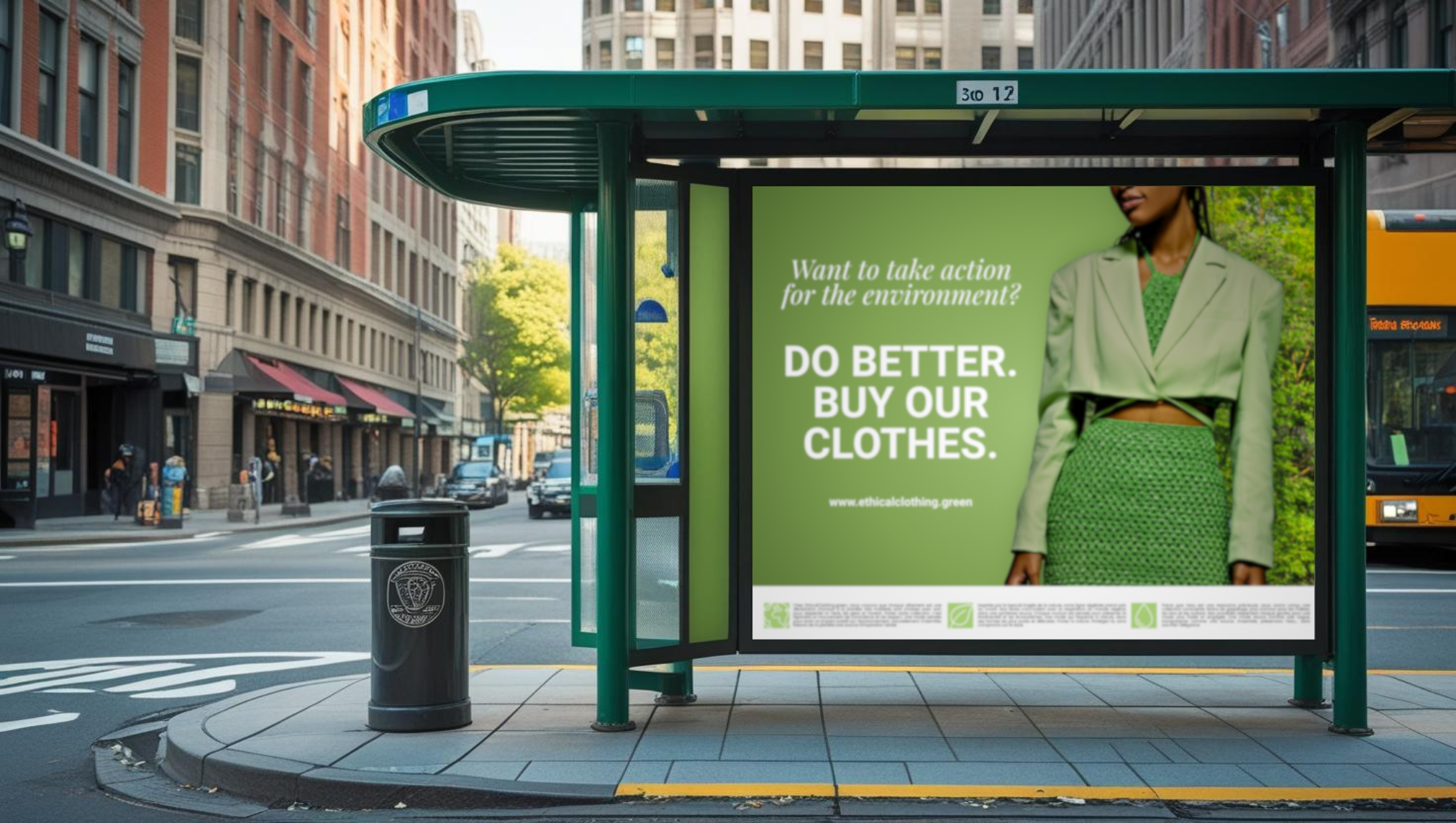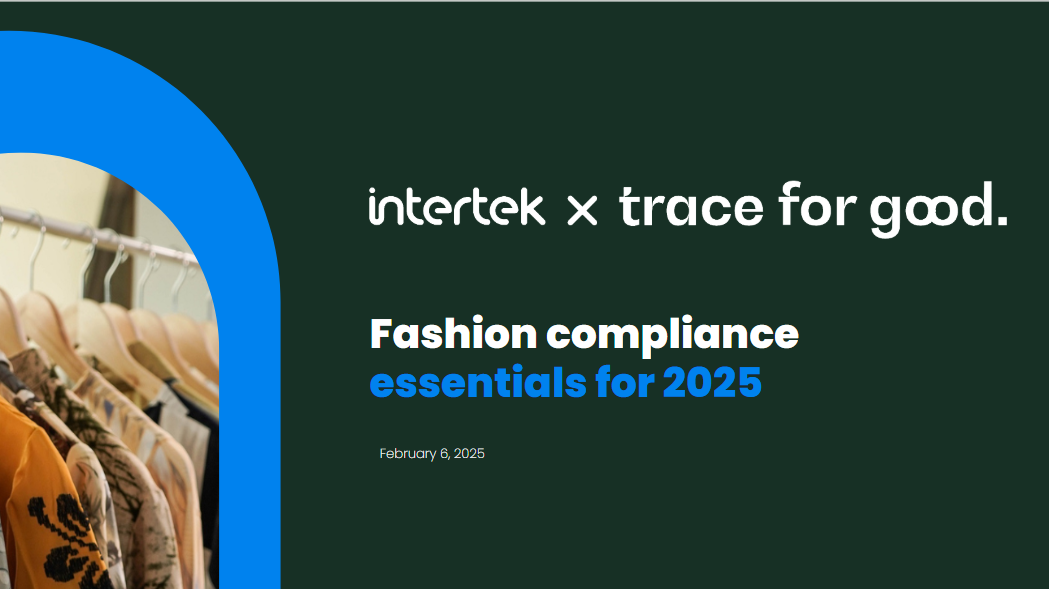Mastering the European Union Strategy for Sustainable Textiles
Stay informed about the EU roadmap: product policy, transparency and circularity.
Objectives and Timeline of the European Textile Strategy
The European Union's strategy for sustainable and circular textiles was adopted on March 30, 2022, by the European Commission in response to two major challenges:
- The expectations of European citizens regarding human rights, particularly after the awareness triggered by the Rana Plaza collapse.
- The urgency to establish rules to mitigate climate disruption, following the European Green Deal and the Circular Economy Action Plan.
Its objectives by 2030 include:
- Durable clothing over time, at affordable prices.
- Responsible and well-informed consumers.
- Extended producer responsibility throughout the entire value chain of their products (up to the end-of-life).
- Respect for social and environmental rights.
- Absence of hazardous substances.
- Recyclable materials and the use of recycled fibers in a closed-loop.
- Generalization of textile reuse and repair.
The approach is holistic, covering all aspects of the product and associated stakeholders: how clothes are designed, production conditions, consumer information, end-of-life, and shareholder information.
This strategy will have a significant impact on the textile sector in the coming years, with the implementation of 16 legislative texts. Here are the texts and measures related to the European textile strategy that you need to be aware of:
- CSRD Directive on non-financial reporting and the integration of the textile sector into the European taxonomy.
- CSDD Directive on due diligence.
- ESPR Regulation on eco-design and the digital product passport.
- Green Claims Directive on the regulation of environmental communication.
- Revisions to waste regulations: European textile EPR, European Waste Framework Directive, waste transfer regulation.
- Revision of responsible public procurement criteria (Green Public Procurement - GPP).
- Regulation against microplastics.
- Revision of the REACH Regulation on toxic substances and restrictions on allergenic substances, bisphenols, PFAS, PFHxA.
- Revision of the IED Directive on industrial emissions.
Among these proposed directives and regulations, only the CSRD has been enacted and will apply from the 2024 financial year. Next up on the list are the CSDD Directive and ESPR: agreements have been reach on final versions of both theses texts, and they are expected to be adopted by the end of march 2024. The others are still at the proposal stage, and we will keep you informed of any developments.
In the following paragraphs, we present the key European texts to understand how European regulations will transform the textile industry.
A text also crucial for the fashion and luxury sector, concerning leather and not associated with the European textile strategy, is the European anti-deforestation regulation. It will apply from 2024 to market operators of risk products (wood, leather, rubber, etc.). Please refer to our article on the subject for more information.
CSRD, European Taxonomy: ESG Reporting for Increased Transparency to Shareholders on Sustainability Issues
To promote ecological transition and enhance industry transparency, the European Commission aims to facilitate the development of sustainable finance and impose increasing reporting requirements on companies regarding social and environmental impact elements. This involves two mechanisms:
- European Taxonomy: The European Taxonomy aims to define economically sustainable activities towards which responsible investments should be directed. It came into effect in 2022 for sectors such as construction, energy, and transportation. As part of its textile strategy, the European Commission aims to integrate the textile industry into this taxonomy by specifying precise criteria for an actor to be considered circular and valued by investors.
- Corporate Sustainability Reporting Directive (CSRD): The Corporate Sustainability Reporting Directive replaces, within the framework of the European Green Deal, the Non-Financial Reporting Directive (NFRD) with more ambitious provisions. It will be gradually implemented from January 1, 2024. It applies to a broader range of companies, requiring more detailed disclosure of their environmental, social, and governance (ESG) risks, opportunities, and impacts according to harmonized European standards.
For fashion brands to meet the transparency regulatory requirements imposed by the CSRD, a prerequisite is a detailed understanding of their production chains up to the raw material origin. Traceability processes will be essential to collect all the required information for CSR assessments compliant with regulations.
To learn more about CSRD and sustainability reporting, read our article.
CSDD, Forced Labor Ban: Ensuring Ethical Clothing Production Conditions
Two European texts aim to establish a duty of vigilance for companies at the European level regarding the upstream of their production chain:
- Sustainable Corporate Due Diligence Directive (CSDD): The proposed directive seeks to establish minimum requirements for due diligence. Brands must understand the risks and impacts of their supply chains on human rights and the environment and take measures to prevent and mitigate them.
- Forced Labor Ban: This proposal aims to identify forced labor risks (geographical areas, industries) in cooperation with civil society to identify and block affected products at the Union's borders.
Similar regulations are already enforced in France and in Germany but these European laws will reinforce and extend their scope.
These measures particularly impact the textile industry, as it has complex and opaque production chains. They require fashion brands to trace their products to know all their indirect suppliers and thus identify and manage risks in their value chain.
Empowering Consumers, Green Claims: Informing Consumers and Shielding Them from Greenwashing
Similar to the French government (see dedicated article), the European Commission aims to provide consumers with better information about the environmental impacts of the products they consume.
This involves setting rules for clear and non-misleading information that highlights clothing with genuinely minimal impact on the environment and climate change. Two complementary texts address this:
- Empowering Consumers Directive: The March 2022 proposal aims to empower consumers to contribute to ecological transition. It encourages sustainable consumption by categorizing greenwashing practices (vague or misleading environmental claims) as unfair commercial practices. It also requires brands to communicate on the sustainability, repairability, and planned obsolescence of their products. It has been adopted by the European Parliament in january 2024, and member states will have 2 years to adopt the new law into their own legislations - meaning obligations will entry into force starting in 2026.
- Green Claims Directive: Published at the end of March 2023, this directive complements the first text.
Among the provisions established by the Green Claims Directive, we find:
- Defining common criteria whereby environmental claims are not considered greenwashing. These rules mandate that any environmental claim must be transparently justified, verified, and reflect a life cycle approach, under penalty of a fine of at least 4% of turnover.
- Restricting the proliferation of labels: New labels are prohibited unless developed at the European level for public labels, and they must be more demanding than existing labels for private labels.
- Stating that the Product Environmental Footprint (PEF) method is not comprehensive enough to account for the environmental impacts of textile products and cannot serve as the sole methodology for calculating environmental scores for clothing.
These measures also significantly impact fashion brands as they struggle to include scope 3 in their CSR and impact calculation strategies. To avoid being condemned for greenwashing, brands must collect robust evidence throughout the life cycle of their products to support their environmental communication.
ESPR: Making Eco-Designed Textile Products the Standard
The Eco-design for Sustainable Products Regulation, known as ESPR, aims to establish eco-design requirements for product families. It complements the 2009 eco-design directive, which only covered energy-related products.
Its goal is to define a precise framework for brands to bring only sustainable products to the market by 2030.
The proposed minimum sustainability requirements address various issues: physical durability, circularity, energy efficiency, resource consumption, carbon and environmental footprint, and consumer information, including a digital product passport.
The text also includes a ban on the destruction of unsold apparel and footwear products.
Revision of the Waste Framework Directive and Waste Shipment Regulation: Setting Conditions for a Circular Fashion Industry
The European Commission also plans texts regarding product end-of-life to promote a circular economy at the European level.
The European Commission has thereby made a proposal to revise the European Waste Framework Directive, published on July 5, 2023. This involves:
- Applying the Extended Producer Responsibility principle to textile products, as is currently the case in France.
- Prioritizing waste treatment methods: prioritizing prevention, then reuse, recycling, other types of valorization, before disposal.
- Defining "end-of-waste criteria," meaning criteria by which an article or substance is no longer considered waste but as a product or raw material that can be legally sold and used.
There is also a project to revise the Waste Shipment Regulation: While waste transit between countries is currently highly limited, the European Union plans to relax rules to promote circular economy in the European single market.
According to the European Commission, the consumption of textile products is the fourth-largest source of environmental and climate impacts for Europeans, following food, housing, and transportation. While the textile and apparel sector employs over 1.5 million Europeans, it is a key asset for the local economy (Sustainable and Circular Textiles Factsheet - 2022).
In response to the climate urgency and the demands of European citizens, who seek access to quality clothing that respects human rights and the environment, the European Commission plans to regulate the fashion industry by 2030. This involves the European Strategy for Sustainable and Circular Textiles, also known as the European textile strategy or sustainable textiles strategy.
→ What are the objectives of the European textile strategy?
→ CSDD, CSRD, ESPR: How to navigate through the texts and acronyms that compose it?
Our analysis of the European textile strategy helps you gain clarity on upcoming regulations at the European level that will impact the operations of fashion brands.
white paper
replay
Summary
Fill out the form below.





.avif)

.avif)